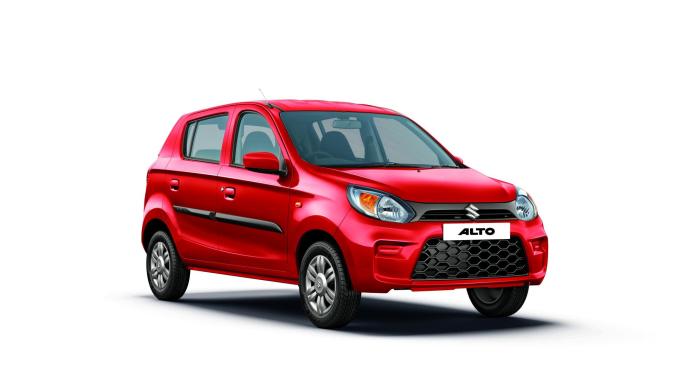All Brand New Car Prices A Comprehensive Guide
Factors Influencing New Car Prices
All brand new car price – The price of a new car is a complex interplay of various factors, from manufacturing costs to market dynamics and government regulations. Understanding these influences is crucial for making informed purchasing decisions.
Manufacturing Costs
The initial cost of producing a vehicle significantly impacts its final price. This includes raw materials (steel, aluminum, plastics), labor costs (assembly line workers, engineers), and manufacturing overhead (factory operations, equipment maintenance). Increased material costs due to inflation or supply chain disruptions directly translate to higher vehicle prices. For example, the global chip shortage in recent years caused significant price increases across many car models due to the limited availability of essential components.
Supply and Demand
The principles of supply and demand play a pivotal role in setting new car prices. High demand coupled with limited supply, as seen during periods of economic growth or unexpected events like the aforementioned chip shortage, leads to price inflation. Conversely, during economic downturns, lower demand can cause prices to decrease as manufacturers offer incentives to stimulate sales.
Dealer Markups
Dealers often add a markup to the manufacturer’s suggested retail price (MSRP), contributing to the final price paid by the consumer. The extent of the markup varies depending on factors such as the vehicle’s popularity, market conditions, and the dealer’s own pricing strategies. Highly sought-after models, particularly those with limited availability, tend to see higher markups.
Government Regulations and Taxes
Government regulations, such as safety and emissions standards, influence manufacturing costs and ultimately, the vehicle’s price. Taxes, including sales tax and registration fees, also add to the overall cost of purchasing a new car. These vary considerably by location and can represent a significant portion of the final price.
Economic Conditions
Economic factors like inflation, interest rates, and consumer confidence significantly impact new car affordability. High inflation increases manufacturing and operational costs, leading to higher prices. Rising interest rates make financing more expensive, increasing the overall cost of ownership. Low consumer confidence can dampen demand, potentially leading to price reductions.
Car Segment Price Comparison
| Make | Model | Average Price | Price Range |
|---|---|---|---|
| Toyota | Corolla | $25,000 | $22,000 – $28,000 |
| Honda | Civic | $26,000 | $23,000 – $29,000 |
| Ford | Escape | $30,000 | $27,000 – $33,000 |
| Chevrolet | Equinox | $31,000 | $28,000 – $34,000 |
Geographical Variations in New Car Prices
The location of purchase significantly influences the final price of a new car. Several factors contribute to these regional differences.
Location’s Impact on Cost
Factors such as transportation costs, local taxes, dealer competition, and consumer demand all play a role in determining price variations across different geographic areas. Areas with higher population densities and stronger demand may experience higher prices than less populated regions.
Urban vs. Rural Prices
Generally, new car prices tend to be higher in urban areas compared to rural areas. This is often attributed to higher demand, increased operating costs for dealerships in urban locations, and potentially greater competition leading to less price negotiation in urban markets.
State/Regional Price Differences
State and regional variations in taxes, regulations, and market conditions contribute to price discrepancies. States with higher sales taxes will naturally have higher final prices. Areas with a higher concentration of dealerships might experience increased competition leading to lower prices for consumers. Conversely, regions with limited dealerships might experience higher prices due to reduced competition.
Regional Price Variation Map
A hypothetical map illustrating regional price variations would show a color-coded representation of the average price of a specific car model across different regions. Darker shades of color would indicate higher prices, while lighter shades would represent lower prices. The map would clearly delineate state boundaries and major metropolitan areas, highlighting price clusters and regional trends. For example, coastal areas and major cities might show higher prices compared to rural, inland regions.
Local Market Competition
The level of competition among dealerships in a particular area significantly impacts pricing. Areas with numerous dealerships competing for customers are more likely to see lower prices and more competitive offers, while regions with limited dealership presence may have higher prices due to reduced competition.
Features and Options Impacting Price
The features and options included in a new car significantly influence its price. Understanding these variations is essential for budget planning.
Base vs. Fully Loaded Vehicles
The price difference between a base model and a fully loaded vehicle can be substantial. Base models typically offer essential features at a lower price point, while fully loaded vehicles include numerous optional features, such as advanced safety technologies, premium audio systems, and luxurious interior upgrades, significantly increasing the cost.
Specific Feature Influence
Specific features have varying impacts on price. Advanced driver-assistance systems (ADAS) like adaptive cruise control and lane-keeping assist add to the cost, as do larger, more powerful engines, upgraded interiors (leather seats, premium materials), and advanced infotainment systems.
Optional Packages and Price Increases

Source: acecdn.net
Manufacturers often offer optional packages that bundle several features together at a discounted price compared to purchasing them individually. These packages can include convenience features, safety technologies, or performance enhancements. However, even with the discount, adding an optional package will still increase the overall cost of the vehicle.
Trim Level Price Differences

Source: indianautosblog.com
Different trim levels within the same car model represent varying levels of features and equipment. Higher trim levels typically include more luxurious features and advanced technologies, resulting in a higher price tag compared to lower trim levels.
Financing and Purchasing Options: All Brand New Car Price
Financing and purchasing options significantly impact the total cost of a new car. Understanding the various methods and their implications is crucial for responsible car buying.
Understanding all brand new car prices can be challenging, with variations across makes and models. A good starting point for your research might be to check out specific celebrity car purchases, such as the price of ajith new car price , to get a sense of the market. This can help you better contextualize pricing within the broader spectrum of all brand new car price ranges.
Financing Methods and Total Cost
Various financing methods are available, including traditional auto loans, leasing, and financing through the dealership. Each method has different terms, interest rates, and associated costs. Auto loans typically involve a fixed monthly payment over a set period, while leasing involves monthly payments for the use of the vehicle over a shorter term. Dealership financing might offer attractive initial terms but could carry higher interest rates.
Lease vs. Purchase
Leasing typically involves lower monthly payments compared to purchasing, but you don’t own the vehicle at the end of the lease term. Purchasing provides ownership but usually requires a larger down payment and higher monthly payments. The best option depends on individual needs and financial circumstances.
Interest Rates and Loan Terms, All brand new car price
Interest rates and loan terms directly affect the total cost of financing a new car. Lower interest rates result in lower overall costs, while longer loan terms reduce monthly payments but increase the total interest paid over the life of the loan.
Incentives, Rebates, and Discounts
Manufacturers and dealerships frequently offer incentives, rebates, and discounts to stimulate sales. These can include cash back offers, low-interest financing, or special lease deals. Taking advantage of these incentives can significantly reduce the final cost of the vehicle.
Monthly Payment Comparison
| Loan Term (Years) | Interest Rate (%) | Loan Amount | Monthly Payment |
|---|---|---|---|
| 3 | 5 | $20,000 | $591 |
| 5 | 6 | $20,000 | $376 |
| 7 | 7 | $20,000 | $312 |
| 6 | 4 | $20,000 | $359 |
Comparison of New Car Prices Across Brands
New car prices vary considerably across different manufacturers, reflecting brand image, features, and target markets.
Average Prices Across Manufacturers
Luxury brands generally command higher prices than mainstream brands due to their reputation, features, and target customer base. Budget-friendly brands offer vehicles at lower price points, often with fewer features and less luxurious interiors. Mainstream brands occupy the middle ground, offering a balance of features and affordability.
Pricing Strategies

Source: carscoops.com
Some brands focus on value, offering competitive prices for their features, while others emphasize premium features and a luxury experience, justifying higher price tags. The brand’s positioning and marketing strategies significantly influence pricing.
Factors Contributing to Price Variations
Factors such as manufacturing costs, brand reputation, target market, included features, and technological advancements contribute to price variations. Luxury brands often utilize higher-quality materials and advanced technologies, leading to higher manufacturing costs and prices.
Comparable Models and Price Differences
Comparing comparable models from different brands reveals significant price differences. For example, a compact sedan from a luxury brand will typically be significantly more expensive than a comparable model from a mainstream or budget-friendly brand, even if the features are somewhat similar. The price difference reflects the brand’s image, target market, and perceived value.
Questions and Answers
What is the average lifespan of a new car?
The average lifespan of a new car depends on maintenance, driving habits, and the vehicle’s make and model. However, a well-maintained car can easily last 10-15 years or even longer.
How much should I put down on a new car?
The ideal down payment amount varies depending on your financial situation and loan terms. A larger down payment typically results in lower monthly payments and less interest paid over the life of the loan.
What are the hidden costs associated with buying a new car?
Hidden costs can include taxes, registration fees, dealer fees, and extended warranties. It’s crucial to factor these into your overall budget.
What is the best time of year to buy a new car?
Generally, the end of the month, quarter, or year often sees better deals and incentives from dealerships as they aim to meet sales quotas.





















